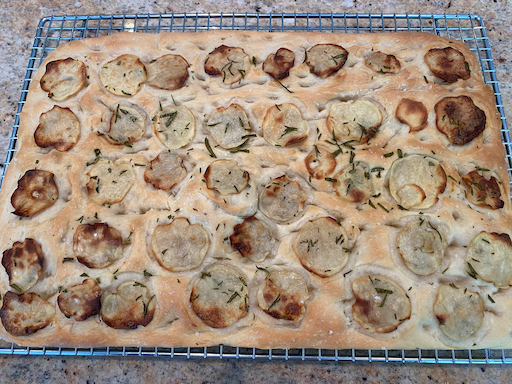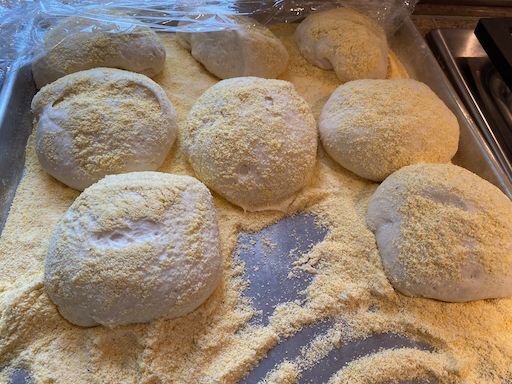My wife pointed out to me that we have some frozen quail. The last time we cooked quail, we baked them but we apparently did not blog the recipe. Our memory is that it was not bad but there were lots of small bones. This time we looked for other recipes and decide go with this “Greek style” recipe. The original recipe calls for braising the quail in wine, with aromatic vegetables then placing them in a Dutch oven and cooking them in an oven for 1 hour. Once they were cooked the recipe called for adding olives, artichoke hearts and capers once more warming it up again on the stove top. We did not see the point in using the oven and, instead, used our Instant pot (more about this later). The picture below shows the finished dish. The only way to eat this is using your fingers. (Necessary to separate the meat from all the minuscule bones). It had lots of flavor ingredients (lemon, oregano, artichoke herts, black olive, caper and garlic) but the flavor was not as intense as we would have expected.
Ingredients1/4 cup olive oil
4 to 8 quail
Salt
3 stalks celery, chopped
1 large yellow onion, sliced thin
1 head garlic, cloves peeled but whole
2 teaspoons dried oregano
1 cup white wine
3 Lemons, zest and juice
12 ounces marinated artichoke hearts
12 ounces pitted black olives
1 tablespoon capers (optional)
3 tablespoons chopped fresh parsley (we skipped this since we id not have it)
Black pepper to taste
Directions:
Using kitchen shears or a knife, cut out the backbones and ribs of the quail. The picure below is before I took of the ribs.
Salt the quail well and brown them in the oil in a frying pan, removing them to a bowl as they brown (I did brown the skin as indicated but I am not sure this is necessary).
Add the onion and celery and sauté until translucent, but not browned.
Add the garlic cloves, the quail back into the pot along with any juices that have accumulated in the bowl.
Add the oregano and the wine. Mix well and let the wine boil for a minute.
Just barely cover the quails with water*, bring it to a simmer and add salt to taste. Add the lemon zest.
Place the quail and vegetables in the instant pot, cut the parchment paper to fit the Instant Pot and place it as a paper lid. Pressure cook for 30 minutes with natural depressurizing. See below.
I could have continued with the instant pot but I placed the contents in a frying pan on a medium flame and added the artichoke hearts, black olives and capers and cooked for 5 minutes.
Add lemon juice and black pepper.
* This step of adding water probably works if the quail is cooked in the oven. But it does not work when cooking in the Instantpot. This is because it seems the liquid does not evaporate with pressure cooking the same as it would with oven cooking. After the quail was cooked the sauce was a bit watery. I removed the quail and put the sauce in a pan and reduced it to a gravy consistency. Next time I won’t add any water.
Later, my wife took the meat off the bone and simmered the leftovers for 30 minutes which reduced the sauce even more and further intensified the flavors. I added fresh artichoke hearts, olive and caper. This one tasted much better. Be careful of small bones, however.

.jpeg)











.jpeg)








